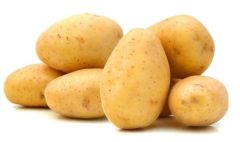PASSAGE 1 The history and production of chocolate
26 تیر 1403 1403-08-12 15:10PASSAGE 1 The history and production of chocolate
READING PASSAGE 1
The history and production of chocolate Early history in Central America
The climate of tropical rain forests combines great quantities of rainfall with high year- round temperatures and humidity. This results in the perfect conditions for the cultivation of the cacao tree plant from whose bean chocolate is derived. This tree has grown in the wild in Central America for about 10.000 years. The Olmec Indians, whose civilization flourished in what is more southern Mexico from 1500 to 300 BC are believed to have been the first to grow cocoa beans as a domestic crop.
The cacao tree was worshipped from about 600 AD by the Mayan people of Central America and southern Mexico, who believed it to be of divine origin Cacao, which the early explorers renamed to as cocoa, is actually a Mayan word meaning ‘god food’.
The Mayans brewed a spicy, bitter sweet drink by pounding the cocoa beans with maize and chilli peppers and letting the mixture ferment. This drink was reserved for use in traditional ceremonies as well as for drinking by the wealthy and by priests, who also ate a porridge made from the beans.
In about 1200 AD the Aztects of central Mexico were introduced to cocoa beans and came to highly prize them, but because they lived further north at more arid, higher altitudes not suitable for the cultivation of the cacao tree, they had to acquire the beans through trade or by force. The Aztecs used cocoa beans as currency and taxes were paid in the beans to their rulers. In fact, the Aztec royal treasury consisted not of precious metals but of cocoa beans. The Aztecs also enjoyed a beverage made from the beans, and this again featured prominently in rituals and as anuxury available only to the very wealthy. The Aztecs called this drink “xocolati”. The Spanish explorers found this word almost impossible to pronounce and so corrupted it to “chocolat”, which the English subsequently changed to chocolate.
Introduction to Europe and North America
Chocolate was brought back to Spain in the early 16th century by Spanish explorers, who at first found the Aztec drink distasteful because of its bitterness. However, they learned to improve its taste by mixing the ground roasted beans with sugar and vanilla. Chocolate factories were established in Spain and by the early 17th century, chocolate powder was being exported to other parts of Europe. The Spanish kept the source of the drink- the beans- a secret for many years, so successfully, in fact, that when English pirates boarded a Spanish ship they thought carried great treasure and only found a load of cocoa beans, they burned the ship in frustration. If only they had known that chocolate at that time was extremely valuable.
Within a few years, the cocoa beverage produced in Spain was sought after throughout Europe. The first chocolate house in England opened in 1657, followed rapidly by many others. These establishments were used as clubs where wealthy people could meet to talk to their friends and to discuss business over a cup of chocolate. The first recorded instance of chocolate being eaten in solid form occurred when a baker in England began adding cocoa powder to cakes in the mid-1600s. Then in 1828, a Dutch chemist, Johannes Van Houten invented a method of extracting the bitter-tasting Cocoa butter from the roasted beans. His aim was to make the cocoa drink smoother and more palatable, however, unknowingly he paved the way for the chocolate bar that we consume today.
In the early 18th century, certain companies owned by prominent English families including the Frys, Rowntrees and Cadburys, began making chocolate. Many of these chocolate factory owners were noticed for their enlightened treatment of employees, providing not just jobs but facilities such as housing and schools. In fact, the Cadbury company constructed a large purpose-built town near Birmingham. And interestingly, Millton Hermshey, founder of perhaps the most famous US chocolate-making company of its day, also established a town in Pennsylvania in 1900.
The production of chocolate
Producing chocolate is a time-consuming and complicated process. After being harvested and separated from the pods which contain them the beans are allowed to ferment and then dried either in the sun (which produces the best chocolate) or artificially, using specially designed machines, (which creates an interior chocolate). After that the beans are roasted according to various formulas which affect the favour of the final product.
The bears are then lightly crushed, the outer layer of shell discarded, and the internal kernel or ‘nib’ returned. At this point, the nibs, which contain high quantities of a fat known as cocoa butter may be treated to develop their flavour and colour. The nibs are finely ground, and in the grinding process heat is produced which liquefies the product into substance called the liquor’. This is cooled and allowed to solidity. After this stage, the chocolate is made into any of a multitude of solid forms or is ground into cocoa powder, depending on the ultimate intended use.
Question 1-5
Do the following statements agree with the information given in Reading Passage 1? In boxes 1-5 on your answer sheet, write
TRUE if the statement agree wittithe information
FALSE if the statement contradicts the information
NOT GIVEN if there is no information on this
1 A climate with seasonal variation in temperature is ideal for growing the cacao tree.
2 It is likely that the Olmec Indians were the first people to cultivate the cacao trees.
3 The location of the Azteca homeland meant that they had to obtain cocoa beans from elsewhere.
4 The Aztec rulers demanded heavy taxes from their subjects
5 Drinks made from cocoa beans were widely consumed by ordinary Aztecs
Question 6-10
Complete me notes below
Choose ONE WORD ONLY from the passage for each answer. Write your answers in boxes 6-10 on your answer sheet
The history of chocolate
Introduction to Europe and North America
• Spanish explorers introduced chocolate drink to Europe in 16th century
• ingredients added to reduce 6……….
• chocolate houses established in 17th century in England for social, 7 ………. and
other activities
Developments in the production of chocolate
• Englishman who was a 8……….creates first known edible chocolate product in 1600s
• Dutch scientist invents process leading to creation of the chocolate 9……….
• many English producers provide variety of facilities for 10……….
• Cadbury (in England) and Hershey (in America) each establish a town
Questions 11-13
Complete the flow chart below.
Choose ONE WORD ONLY from the passage for each answer. Write your answers.
The chocolate manufacturing process
After being separated from their pods, cocoa beans are 11 ……….naturally or
mechanically
Beans then 12 ……….to create distinctive tastes
Nibs are separated from the shells
Heat generated during the grinding of the nibs produces 13 ……….
Further treatment produces desired final chocolate product
1. FALSE – The passage says the climate needs high year-round temperatures (paragraph 1).
2. TRUE – The passage states the Olmecs are believed to be the first to cultivate cocoa (paragraph 1). “The Olmec Indians, whose civilization flourished in what is more southern Mexico from 1500 to 300 BC are believed to have been the first to grow cocoa beans as a domestic crop.”
3. TRUE – The Aztecs lived in a region not suitable for growing cacao and obtained beans through trade or force (paragraph 3).
4. NOT GIVEN – The passage says taxes were paid in cocoa beans to Aztec rulers. However, it doesn’t say how “heavy” (paragraph 3).
5. FALSE – The passage says the drink was for the wealthy, priests, and ceremonies (paragraph 3).
6. bitterness (paragraph 4) – Sugar and vanilla were added to improve the taste.
7. business (paragraph 5) – Chocolate houses were used for socializing and discussing business.
8. baker (paragraph 5) – A baker in England added cocoa powder to cakes.
9. bar (paragraph 5) – Van Houten’s process paved the way for the chocolate bar.
10. employees (paragraph 6) – The Fry, Rowntree and Cadbury families were known for their treatment of employees.
11. dried (paragraph 7) – the beans are allowed to ferment and then dried either in the sun (which produces the best chocolate) or artificially.
12. roasted (paragraph 7) – Roasting affects the flavor of the final product.
13. liquor (paragraph 8) – Grinding the nibs produces a substance called liquor.







